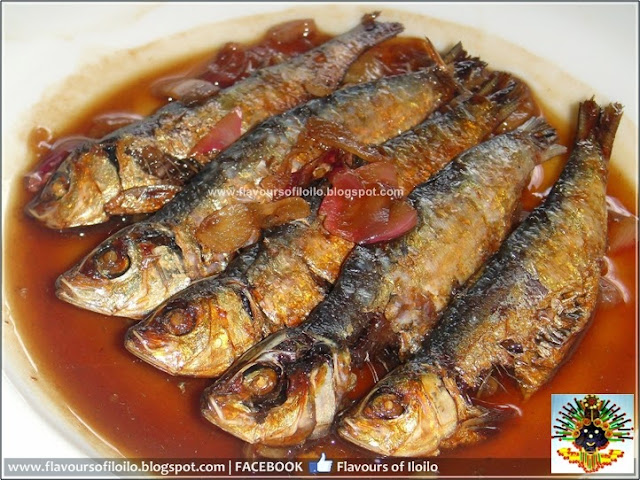Tabagak is a Filipino breakfast staple and are salted and sun-dried fishes (local herring). Called tuyo in Tagalog, it is usually partnered with fresh tomatoes and eggs to make perfect breakfast combo.
Commonly fried, the smell usually fills the kitchen, the adjacent rooms and even nearby households giving everyone an idea that someone will be having an awesome breakfast meal.
Commonly fried, the smell usually fills the kitchen, the adjacent rooms and even nearby households giving everyone an idea that someone will be having an awesome breakfast meal.
But there are many other ways of cooking tabagak, if you want less grease, you can sugba or grill it over charcoal but you must pay close attention as it burns easily. If you're "game" to suffer the consequences, you can place in the microwave for around a minute or so.
Fried tabagak is partnered with vinegar as dip. Adapting an Ilonggo specialty called binodo, which is overly salted semi dried fish fish, one can make tabagak ala binodo. After frying the dried fish, remove the scaly portion in the oil and saute chopped garlic and onions.
When done, place the fried tabagak then add vinegar and a little soy sauce. Simmer until the vinegar loses its acidity which is about in 3 minutes or so depending on the amount and vinegar variant. I also refer to this as adobo nga tabagak.
Flaked fried tabagak are best mixed with rice and scrambled egg. It can also be used in making pasta with olive olive and as a substitute for anchovies when making puttanesca.When done, place the fried tabagak then add vinegar and a little soy sauce. Simmer until the vinegar loses its acidity which is about in 3 minutes or so depending on the amount and vinegar variant. I also refer to this as adobo nga tabagak.
But I have this (very unhealthy) recipe, you have been warned, of placing plain rice to the oil where the tabagak was fried in making kalo-kalo or fried rice. A little soy sauce and calamansi juice and flaked tabagak makes this (very unhealthy) fried rice) a very very appetizing kalo-kalo reinvention.




